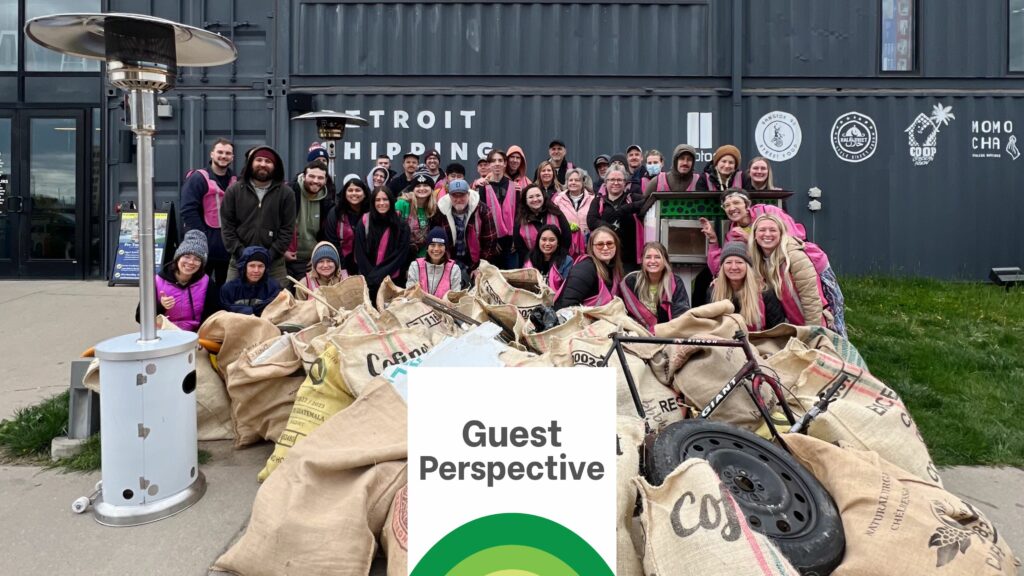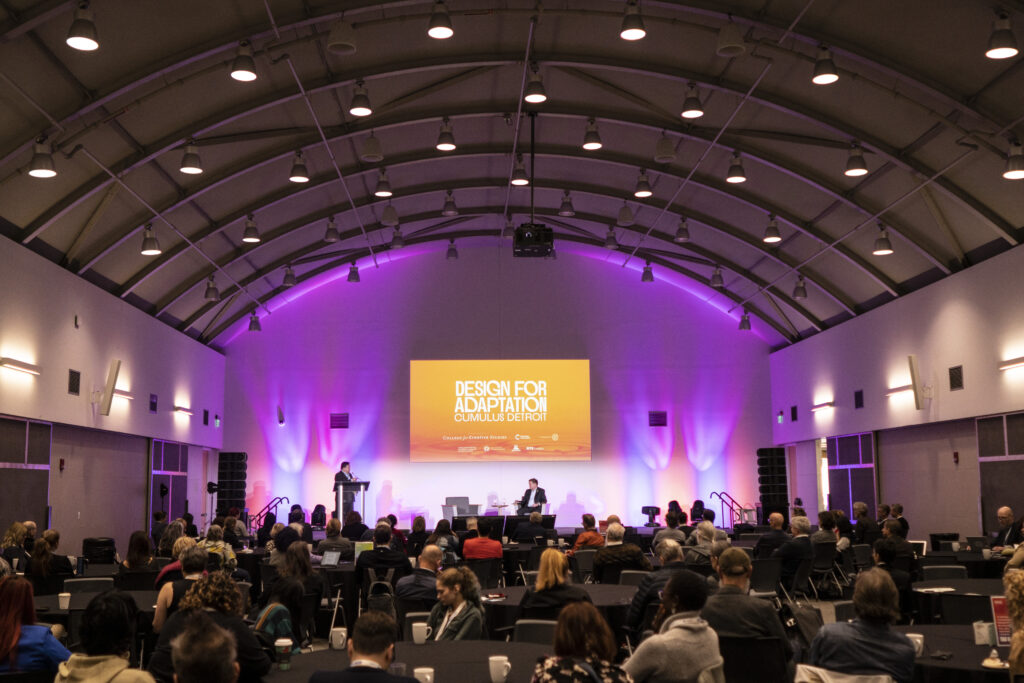The Cleanup Club: Working to Mitigate Plastic Pollution in the Great Lakes

HANNAH TIZEDES IS THE FOUNDER AND EXECUTIVE DIRECTOR OF THE CLEANUP CLUB Before founding The Cleanup Club, a nonprofit dedicated to protecting our communities and Great Lakes from plastic pollution through cleanups and creativity, I amassed a collection of over 100,000 pieces of plastic debris from the Great Lakes shorelines during solo cleanups. I used the colorful found objects to create thought-provoking art pieces and installations to inspire conversations about how we can all play a role in protecting the places we love. Creativity has continued to play a key role in The Cleanup Club’s mission to protect our communities and Great Lakes from plastic pollution while having fun. We aim to serve as an approachable source to help educate and spark dialogue with people online and in person about the urgent need for action to protect our freshwater resources. In 2016, a study from the Rochester Institute of Technology revealed that nearly 22 million pounds of plastic pollution enter our Great Lakes every year, with major cities such as Detroit, Chicago, and Toronto being primary sources. By 2024, plastic production has continued to increase globally, and so has the urgent need to protect our waterways from harmful impacts. This is particularly crucial as these bodies of water provide drinking water to over 40 million people across the US and Canada. Recent studies have shown that topics such as climate change and plastic pollution often leave people feeling frightened and negative. With the rise of terms like “eco-anxiety” and studies emphasizing the growing harms of plastic pollution, The Cleanup Club aims to push forward crucial work for a more sustainable future and cleaner waters. At the same time, we strive to create an uplifting community that empowers individuals, communities, and businesses to take action together through joyful and collaborative experiences. We understand that working together is essential when it comes to finding upstream solutions and mitigating plastic pollution in our region. This is why The Cleanup Club values collaborating with aligned local businesses and global brands. We aim to educate and expand the conversation about Great Lakes plastic pollution through community cleanups, educational programming, and interactive creative projects around Michigan, focusing on Southeast Michigan. When partnering with The Cleanup Club, local businesses enjoy the benefit of a passionate group of volunteers cleaning up their neighborhoods while driving awareness and business to their unique offerings. Past partners, contributors, and sponsors include Walking Lightly and 86 Plastic (local zero waste stores in Metro Detroit), Dessert Oasis Coffee Roasters, HiBAR, Detroit Shipping Co, Belle Isle Conservancy, Royal Oak Sustainability, and more. Community events are not only fun ways to get outside and take part in collective action but also serve as a way to collect data on top-polluting items and top-polluted areas for advocacy and research efforts that further promote upstream solutions. While we acknowledge that cleanups are not the ultimate solution, we strongly believe they play an accessible and active role in education and advancing our collaborative efforts for a brighter, more sustainable future for people and the planet. Learn more at www.thecleanupclub.org and follow on Instagram at @the.cleanup.club. Be sure to subscribe to our newsletter for regular updates on sustainable business practices in and around Detroit.
Cumulus Holds Global Design for Adaptation Conference in Detroit

Cumulus, a global association of art and design education and research, held its annual conference, Design for Adaptation in Detroit Nov. 1-4 at the College for Creative Studies. This marks only the second time in its 30-year history that the conference was in North America. Cumulus connects 350 member institutions across 63 countries to exchange knowledge and best practices to elevate the positive role of designers and artists in creating sustainable and humane futures for all. “If there is one thing we know, we are stronger together,” said Terry Barclay, SBN Detroit Chair and CEO of Inforum, in a Thursday afternoon welcome address. “I think we have a common sense of urgency to break down silos that slow collaboration and this conference is certainly about that.” SBN Detroit was a conference sponsor. “This international conference has such diverse participation,” said Neil Hawkins, president of the Fred A. and Barbara M. Erb Family Foundation, who moderated a keynote address. We have creative designers hoping to change the trajectory of climate disasters. We have local Detroit leaders demanding justice for people already suffering impacts. We have great minds from all corners of the earth here in Detroit, which in many ways can be called ground zero for the climate crisis.” To that end, he noted that metro Detroit has endured serious local flooding from three 500-year rainfalls in the last ten years, holds 25% of the world’s surface freshwater in the great lakes, and the state is fittingly named after a natural resource – Michigan meaning “big lake.” Ian Lambert, co-chair and submissions chair for Cumulus 2022 and also dean of graduate studies at the College for Creative Studies, said, “As the only UNESCO-designated city of design in the U.S., Detroit has an incredible history of makers and manufacturing and design, so it’s fitting that Cumulus was held here. And it’s huge for Detroit.” The conference – focusing largely on the issue of climate change, automation, and income inequality – explored the role designers play in fostering adaptation through a wide range of approaches, methods, visions, and experiments. In that vein, the mission is to think ahead to catalyze ideas to reduce vulnerabilities and foster resilience for communities. Noting that the world is 1.2 degrees Celsius warmer than at any point in human civilization and that 300 billion tons of carbon have been added to the atmosphere by humans, keynote speaker Mikko Ollikainen, head of the Adaptation Fund, said to the audience of designers, “You are the minds to shape the future and you have your work cut out for you. … “We are facing an increasing arrival of uncertainty and must be prepared for things we do not expect and prepared to withstand shocks.” Land use and its relationship to climate change and inequity were the focus of several panels. Anika Goss, CEO of Detroit Future City, said in her keynote, “When we look at the cities in Detroit and around the world that are hit hardest by climate change, it’s always the poorest and the brownest neighborhoods.” She pointed to a community on the lower east side that suffered stormwater flooding as an example, saying, “From an economic standpoint these families continue to lose value in their homes and property simply because they live in a neighborhood with poor infrastructure.” The Eastside Community Network is working to put residents in charge of enhancing their neighborhoods toward resiliency. President Donna Given referenced its LEAP Sustainability Fellowship saying, “When you give someone a small amount of money and the responsibility to build a better space it’s amazing what that can do to a neighborhood.” The fellowship is a training and development program where fellows develop community projects, apply for grant funds to support them, and then implement them with the help of the community. To that end, Jerry Hebron, executive director of Oakland Avenue Urban Farm, shared her story of growing up near Motown in its heyday, leaving the city, and then returning in 2005 to find it riddled by crime and decayed. She became an activist and was charged to find out what needs the community had. “I knocked on doors to collect information and found that housing and food were the residents’ most important needs.” The high vacancy rate and open land equaled opportunity. The community wanted a garden and they built one – 20×20 feet. Today, 14 years later, they are farming 3.5 acres, a farmers market, youth programming, and more. “The community reclaimed that land and worked together to change their neighborhood.” Linking this back to design, Lambert and Leslie Tom, chief sustainability officer at the Charles H. Wright Museum of African American History, presented a collaboration involving the repurposing of three dying trees on the museum’s property. Instead of letting the trees end up in a landfill, The Wright and the Center for Creative Studies repurposed the trees and created a curriculum around co-design for sustainability, climate justice, and African American material culture, out of which came a narrative around how two neighbors – a museum and an art school – set a precedent for climate justice art. “One of the pieces a student created spoke to land use in Detroit by combining window panels from an abandoned home and the repurposed timber to tell the story of decay and rebuild,” Lambert said. There is no doubt that the complex consequences of climate change have pushed the need for community resilient strategies to emerge and thrive in the face of change. About the role designers play in this, Ollikainen said, “How designers see the world and work has a profound impact on building sustainable solutions. You have the vision, and you have the skills to turn that vision into reality.” Be sure to subscribe to our newsletter for regular updates on sustainable business practices in and around Detroit.


